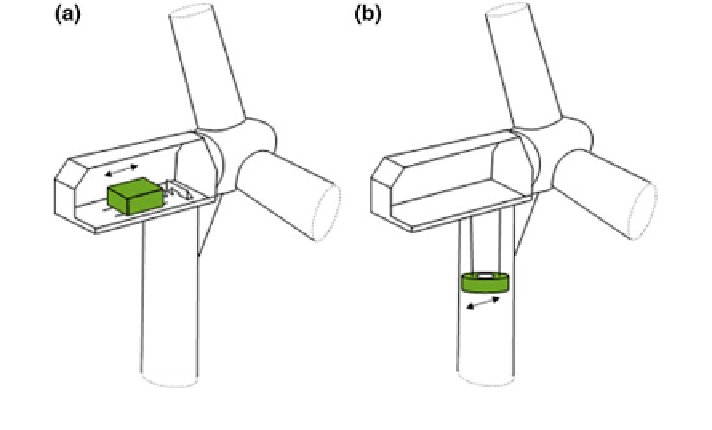Environmental Engineering Reference
In-Depth Information
Fig. 12.6
Wind turbine with tuned mass damper (a) and pendulum damper (b)
characteristics of the tower. As known from other slender structures, TMD can
dissipate especially periodic vibrations. Therefore, they count as an effective
method to mitigate oscillations with definite frequencies like the revolution fre-
quencies 1P and 3P, or vibrations of resonant nature, referred to as f
1
in Fig.
12.5
.
12.3.1 Blade Pitch Control and Brake Systems
To prevent excessive tower vibrations and generating loading most of the modern
wind turbines use blade pitch control and brake systems, which regulate automati-
cally the angle and speed of rotor blades depending on the wind speed and opera-
tional conditions. By means of these measures, the turbines can generate constant
power and avoid critical high rotor speeds. This vibration mitigation method is
especially effective at high wind speeds inducing transient tower vibrations.
12.3.2 Dampers
Wind turbines feature very low damping characteristics compared with other
structures. As shown in Sect.
12.2.1
, the total damping ratio of a wind turbine
resulting from structural and aerodynamic damping equals 1-2 %. With the use of
auxiliary dampers, the structural damping properties can be improved. For instance,
hydraulic dampers with viscose liquids as a passive application or with magneto-
rheological and electrorheological fluids as a semiactive damper can dissipate the

